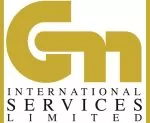Early on in the year the figures showed that the hard work of both Transport Malta and the private sector service providers paid off; the Malta maritime register climbed to the summit within Europe, becoming the largest ship register out of the 27. This also translated into the Malta maritime flag becoming the seventh most popular maritime flag in world, boasting of over 5,830 vessels totalling 45.6 million tonnes. The Malta flag administration's policy is clear, "quality shipping and ensure that ships with a poor detention or safety and marine pollution record do not operate under the Malta flag". Also, whilst the registry continues to grow, the average age of the vessels is continuously decreasing, currently at 12.78 years.
A Low Risk Flag
The Malta maritime flag has been on the Paris MoU White List for some years now and every effort is made to ensure that this does not change. As local service providers will attest, Transport Malta will not jeopardise this status in any way and substandard ships that will essentially put the Flag's reputation at stake will be turned away. Transport Malta has also recently completed the Voluntary IMO Member State Audit Scheme (VIMSAS) which turned out to be quite a straight forward audit without any issues being raised. This was imperative as the fact that the Malta maritime flag was not considered 'a flag that met the low risk criteria' was causing concern amongst ship owners and managers. To be able to promote the Malta maritime flag as a low risk flag is essential for putting owners' and managers' minds at rest. The two critical criteria for a maritime flag to be considered a low-risk flag are being on the Paris MoU White List and a successful audit being carried out. For the first time the Malta maritime flag is finally considered a low-risk flag.
Furthermore, the ICS Shipping Industry Guidelines on Flag State Performance, which set the basic parameters in which every flag State should operate, are closely followed by Transport Malta. Anything less should be considered substandard. The guidelines are an important tool as they allow room for an administration to justify why certain conventions or procedures may have not have been implemented. In other words, ICS acknowledges that one size does not fit all. In this respect the guidelines also state that the annual statistics should not be taken in isolation. The Merchant Shipping Directorate tick practically all the boxes in the guidelines which is very encouraging and it can be stated with a good degree of certainty that whether or not Transport Malta can obtain certain objectives, such as QUALSHIP 21, are at the discretion of third countries. Unfortunately, the threat of being penalised for the presentation of such data is a reality that the administration must live with and does occasionally give rise to concern.
Seafarer Safety above All
The drive to improve the safety and welfare of seafarers' continues in earnest and the adoption of the Maritime Labour Convention is well and truly underway. The convention is currently in the process of being reviewed by the relevant authorities in Malta, following a call for contributions by stakeholders. In this respect the effort of the Maltese authorities to implement it correctly by taking the time to take on board stakeholders' comments and suggestions whilst bearing in mind the local, EU and International legal constraints must also be recognised. When it comes to implementing international regulations, the old adage rings true, more haste less speed as the one size fits all mentality does not apply. To adopt regulations lock stock and barrel into local legislation just to be in a position to say that one was the first to do so is not the correct way to do things. The protection of in excess of 1.2 million seafarers is not to be taken lightly and therefore the correct implementation of such a landmark convention needs to be done wisely. For example Malta's yachting industry is thriving and the administration is correct in reviewing how structural requirements for seafarer accommodation would affect this sector. The EU deadline for implementation by 2011 was a bit of a tall order and the fact that some of the other big European flag States have not yet ratified the MLC proves this.
Look Ahead
What has been achieved throughout 2011 has been quite an accomplishment by both the Merchant Shipping Directorate and the private sector service providers. The economic climate did not lend itself well for achieving many positive results however, the tonnage registered under the Malta maritime flag continued to increase, the average age of the fleet continued to decrease and new standards were achieved. Whilst the attainment of such standards is imperative for all stakeholders and congratulations must be given whenever due, the competition between the top maritime flags is so intense that such milestones have become standard practice. The intensity with which the shipping industry operates does not give anyone much time to tap themselves on the back. A leading maritime flag State such as Malta must continuously strive to be pro-active and a trend setter. The work ethic and mentality with which both the Maltese administration and private services providers operate will not change so as to continue attracting the right type of tonnage.
John A. Gauci-Maistre is the founder and managing director of GM International Services Limited. With over 35 years of experience in the maritime industry, he remains actively involved in attracting new tonnage to the Malta flag.
The content of this article is intended to provide a general guide to the subject matter. Specialist advice should be sought about your specific circumstances.

